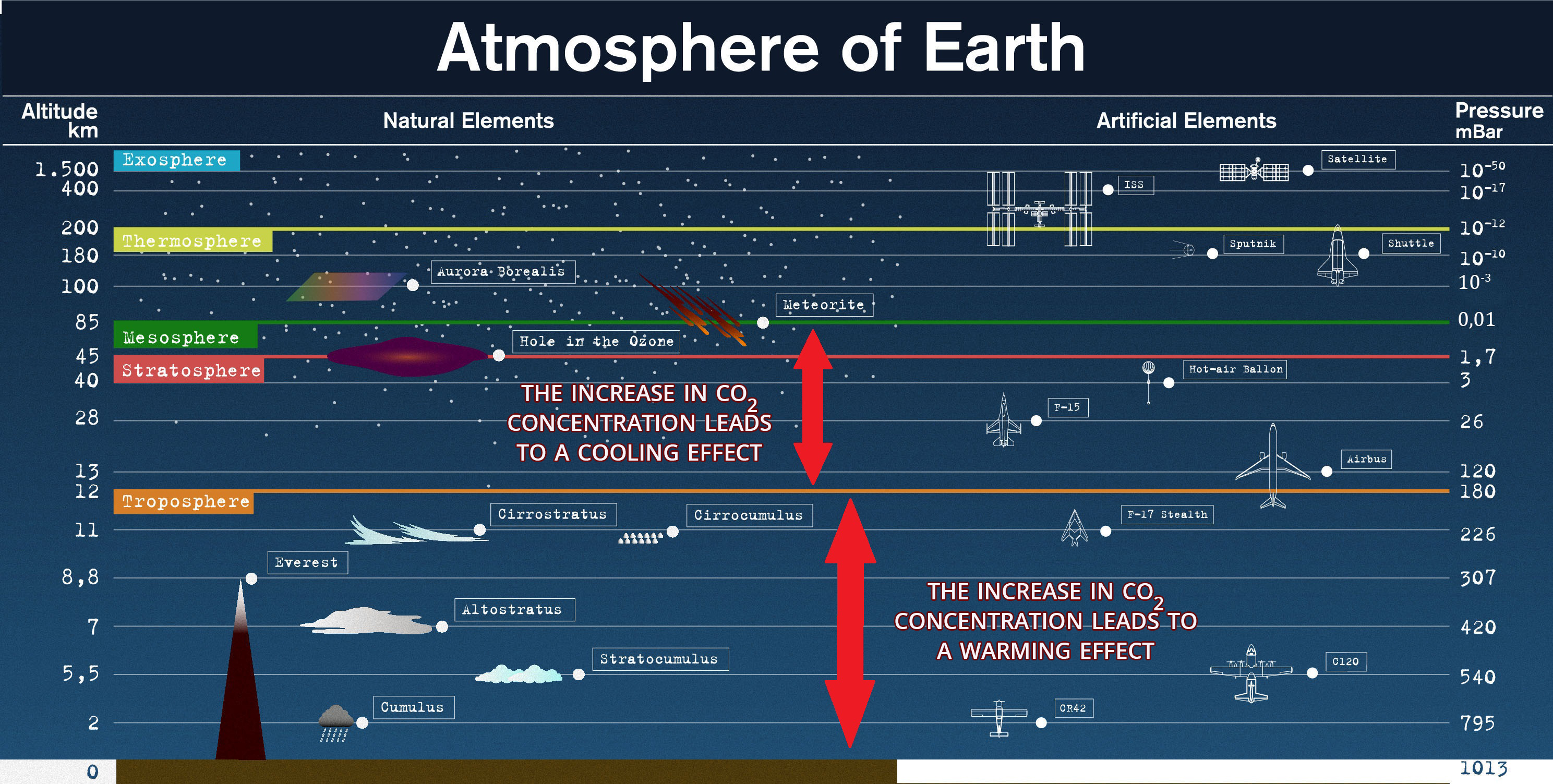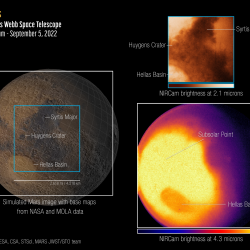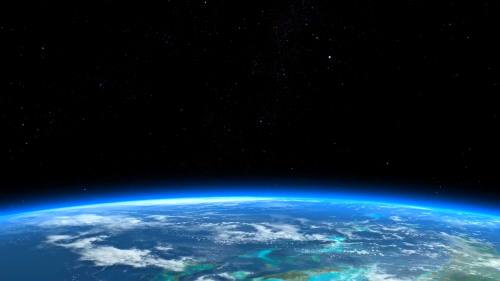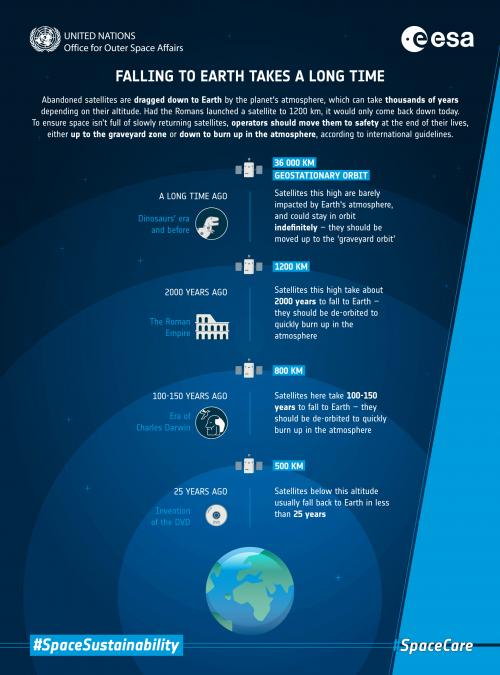We know the drill. Economic and industrial growth are the cause of rising levels of carbon dioxide (CO2) in the Earth’s atmosphere. This being a greenhouse gas, it traps heat from the sun and causes the atmosphere to warm up gradually, wreaking havoc in the fragile Earth system, its flora and fauna. Surprisingly, CO2 has another side effect, a cooling effect. Stop yourself, however, if you think this could compensate for global warming. This process has been going on, and has been studied, for a long time already, and clearly, it hasn’t neutralised the warming trend. So, what is going on exactly?
The atmosphere is like the Eiffel tower
The main point to remember is that it is about the density of the air. You can imagine Earth’s thin coating of gases as an Eiffel tower, very large and heavy at the bottom, but very quickly slimming down to the thin, light top of the tower. As a result of this density difference, the various atmospheric layers behave very differently, for example concerning heat exchanges.
CO2 : a very efficient greenhouse gas
Carbon dioxide molecules are very efficient at absorbing and re-emitting heat in the form of infrared radiation. In the lower atmosphere, air molecules are tightly packed together, like people at a summer festival, and so the heat that one molecule re-emits is immediately absorbed in the same atmospheric region. This is the greenhouse effect, an overall heating of the troposphere.
The middle atmosphere is much less dense (the middle and upper atmosphere combined only hold 15% of the total mass). Here, the infrared radiation that is re-emitted by CO2 molecules is reabsorbed much less and more radiation escapes out into space. This leads to an overall loss of heat, and thus causes a cooling effect.
As humankind emits CO2 and slows down its recapture at the surface its concentration goes up not only in the lower layer but also in the middle layers. The difference is that in the lower layer, it causes the heating to intensify, while in the middle layers it causes the cooling to intensify. As molecules cool, they slow down and stay closer together, and the middle and upper layers shrink slightly.

Original infographic: Marco Saporiti/Density Design Research Lab
A tangible impact on our satellite technology
Satellites orbit the Earth in the uppermost atmospheric layers, the thermosphere and the exosphere. Even though the air is extremely thin in these layers, spacecrafts still experience drag as they are hit by air molecules. This is why active satellites need periodic bursts from small rocket motors to stay in their intended orbit. When old satellites are put out of service, they slowly fall back to Earth because they lose their speed as they experience drag from the air molecules that they hit. The increased drag at a lower altitude slows them down even more, so that they fall even more quickly and eventually disintegrate in the mesosphere. Usually, all pieces burn up before reaching the surface.
But now that rises in CO2 are causing the middle and upper atmospheric layers to cool down and shrink, satellites experience less drag at the altitudes at which they orbit and stay around for much longer. Our atmosphere is thus becoming less effective at cleaning the space debris that orbit our planet. As we put more and more satellites in orbit each year, we cannot count on Nature to maintain a safe environment in orbit around Earth. Climate change thus impacts all human activities, from the surface all the way to Earth orbit.
Further reading
Credit: NASA



